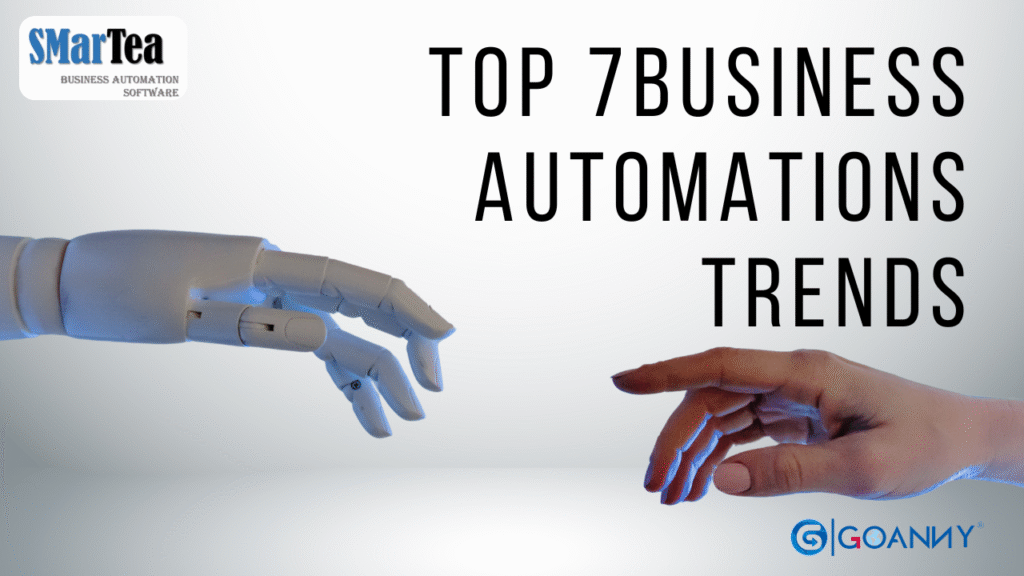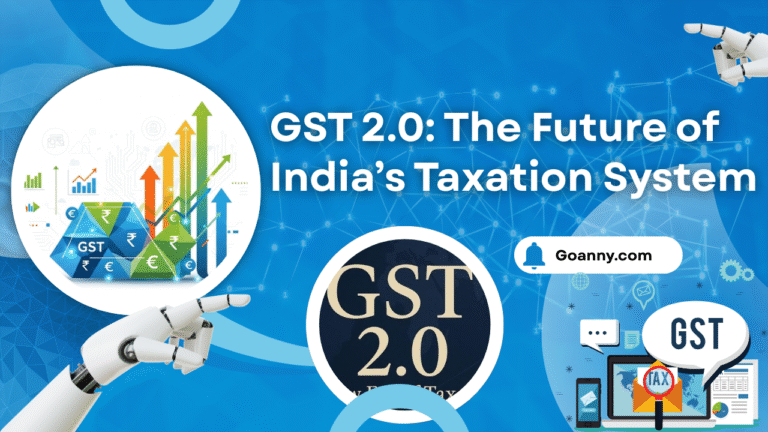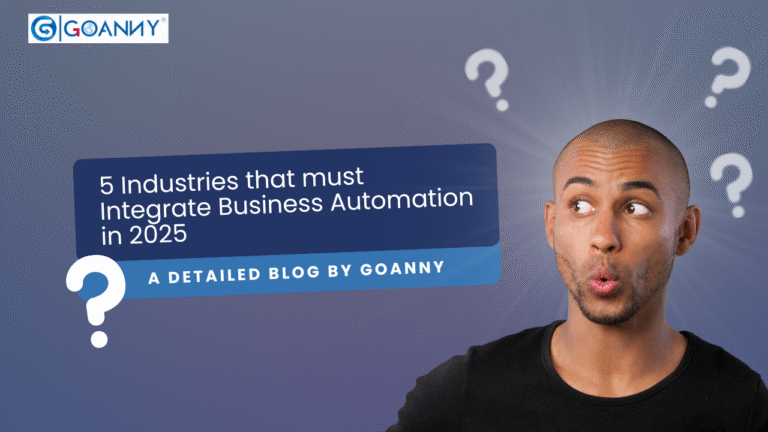Let’s be honest — the way businesses work is changing fast. Like, really fast. And a big part of that change is automation.
In 2025, it won’t just be something that gives you an edge — it’ll be something you need just to stay in the game. Businesses, no matter the size, are already moving towards automation to make things smoother, faster, and just… easier.
So, what’s coming up in automation? And how can you get ready for it without getting overwhelmed?
Here are 7 automation trends you really need to watch in 2025 — broken down in simple language.
1. Hyper Automation is Going Big
What’s that?
It’s when you don’t just automate one or two tasks — you automate full workflows using AI, machine learning, and tools like RPA (robotic process automation).
Why it matters:
By 2025, more than 70% of big companies will use hyper automation in some way. It’s not just for tech giants anymore.
A real example:
Tools like SMarTea (made by Goanny) are helping even smaller businesses get into hyper automation. You don’t need to build everything from scratch — just plug in and go. It automates tasks, pulls reports, cuts down mistakes, and helps everything move faster.
What it helps with:
Speeds up complete workflows
Reduces boring manual work
Gives you real-time updates and insights
What you can do:
✅ Look at your current processes
✅ Spot what’s slow or repetitive
✅ Talk to a software development company that can build custom solutions specifically for your business.
2. AI Helping You Make Decisions
AI isn’t just about answering questions anymore. Now, it can actually help you decide what to do next.
In 2025, AI will help businesses:
See patterns and trends
Predict what might go wrong
Suggest what to do next — and even do it for you
Think about it: A few years ago, no one used ChatGPT. Now? Everyone’s using it — students, business owners, freelancers. It’s part of daily work.
Examples:
AI helping you pick the right price for a product
Recommending changes in supply chain
Predicting which customers might leave, and what to do to keep them
Even if you’re not using AI yet, you can start small with tools like ChatGPT or Microsoft’s AI tools. They’re not perfect, but they really help.
3. Low-Code / No-Code Tools Are Growing
Here’s the deal: Not everyone has a team of developers. And that’s totally fine.
Low-code and no-code tools are made for non-tech people who want to automate stuff without coding. You just click, drag, and connect things.
What’s new in 2025:
These tools are getting smarter. Now they:
Work with CRMs, ERPs, HR tools
Connect with AI systems
Come with better security
Why it helps:
Saves time
Lets your team build things themselves
Less pressure on your tech team
Example:
Even a small business could set up a no-code flow to send lead info from their website straight into their CRM. No need to wait on devs.
4. Automation in Supply Chain & Logistics
This one has been growing since COVID — and it’s not slowing down.
By 2025, expect:
Systems that predict demand before it happens
Smarter delivery routes
Auto-tracking of stock
What gets automated:
Order processing
Inventory levels
Delivery schedules
Route planning
Stat to know:
McKinsey says automation can cut supply chain costs by up to 30%. That’s a big deal.
Tip:
You don’t need a massive system. A good software company can build something just for you — fits your business and budget.
5. Intelligent Document Processing (IDP)
Here’s a pain we all know: entering data from invoices, forms, emails… over and over again.
IDP fixes that by using:
OCR (reads text from images/pdfs)
NLP (understands language)
AI (learns patterns)
By 2025:
Most companies will automate document workflows. Less manual work, fewer mistakes.
Example:
SMarTea comes with built-in tools that read invoices or forms and auto-fill your systems. So your team doesn’t waste time on boring copy-paste work.
Other tools that help:
UiPath, Hyperscience, Kofax
6. Automated Personalisation for Customers
Everyone wants to feel like the brand “gets” them. But doing that manually for every customer? Not possible.
In 2025, we’ll see more of:
Emails that are tailored based on what users did
Chatbots that feel human
Product suggestions that actually make sense
Example:
SMarTea tracks what customers do and follows up — like sending reminders, suggesting products, or assigning leads to the right sales team. And it happens automatically.
Why it matters:
Brands using this kind of automation get way better engagement and up to 20% higher conversions.
7. Security and Compliance Automation
Automation isn’t just about doing more — it’s also about staying safe.
More automation = more data. And more data = more risk.
In 2025, smart businesses will:
Detect threats in real time
Run compliance checks automatically
Block suspicious activity before it causes damage
Simple steps you can take:
✅ Use role-based access
✅ Encrypt everything
✅ Choose vendors with strong compliance (like GDPR, SOC2)
If you’re collecting user or customer data — you really, really can’t skip this.
So… How Can You Get Ready?
Here’s a simple roadmap:
✅ 1. Look at what’s slowing your team down
✅ 2. Pick tools that work well together and can grow with you
✅ 3. Train your team — even just the basics help
✅ 4. Partner with someone who’s done this before.
✅ 5. Start small. One process at a time. Then expand.
Final Thoughts
Automation isn’t just a buzzword. It’s how businesses will run in 2025 and beyond.
From smarter workflows to better decisions and stronger security, automation is changing the game. But it only works if you plan it well and choose tools that actually fit your needs.
We’re the creators of SMarTea, a simple but powerful automation platform made for real businesses. Big or small.
Want to automate the right way?
👉 Visit goanny.com or talk to us. Let’s build something useful.
Social Share
Recent Post
Weekly Top
This blog is powered by Goanny Technology, a trusted Software Development Company in Pune.
Get a Free Consultation Call
We specialize in building reliable, scalable, and user-friendly software solutions for startups and enterprises alike. Whether you’re building from scratch or rescuing a struggling project, we’ve got your back.




